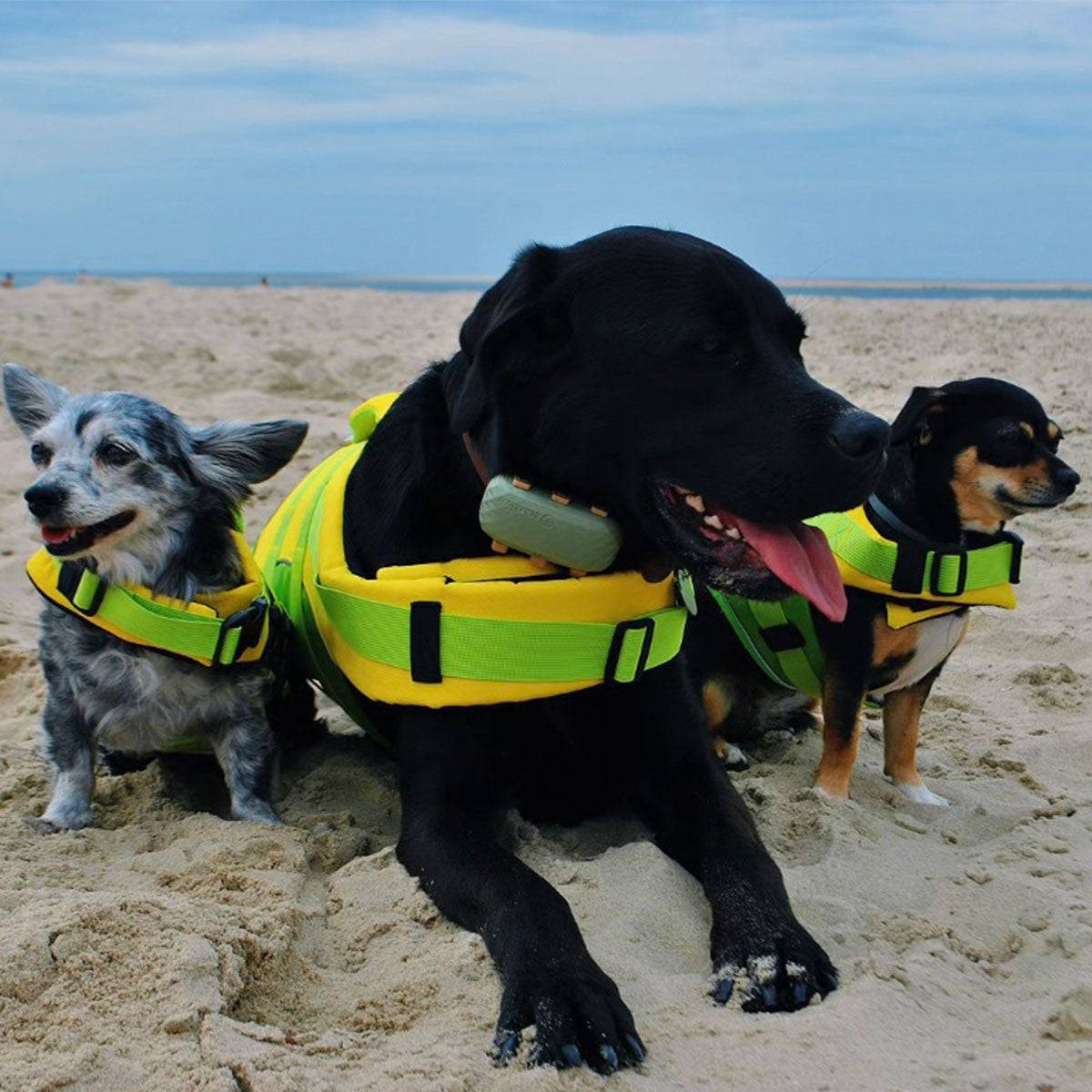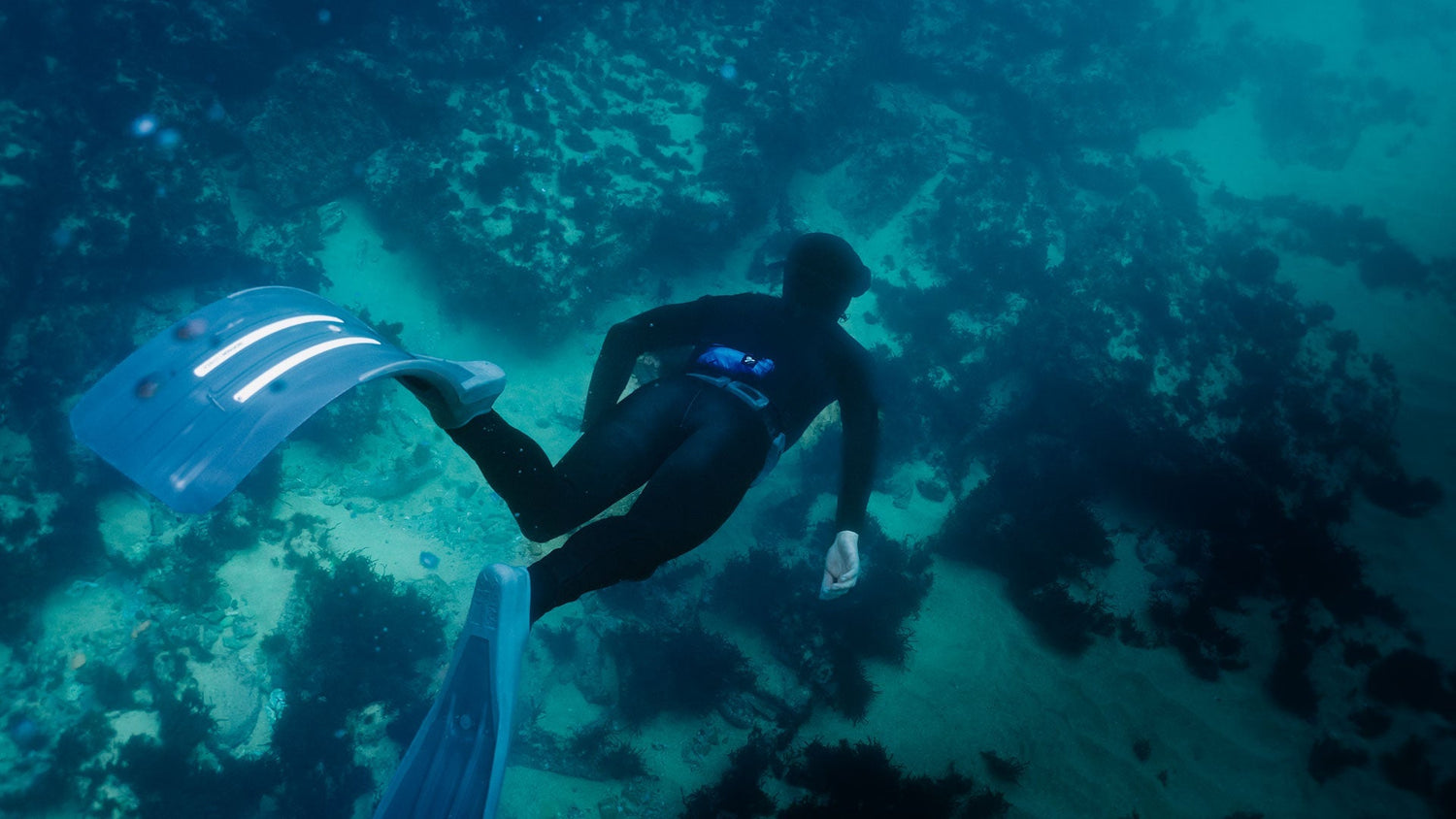With 5 useful tips from Lena Kemna, freediver, surfer and water-woman.
Freediving, also known as apnea diving, is a breathtaking water sport that explores the limits of human abilities in terms of diving and breathing. The discipline is about diving as deep as possible into the underwater world while holding your breath - equipped only with fins, a snorkel and a mask. This fascinating sport already has a long history and inspires people all over the world nowadays. In this article, we will take a closer look at freediving, learn about the techniques and safety aspects and hear from Lena, an experienced freediver, her personal 5 tips for beginners.
The history of freediving
Freediving is not a modern invention, it has a long and rich history dating back to ancient times. Even then, people used the ability to dive deep without breathing apparatus to collect pearls and catch marine animals. The first records of freediving date back to ancient Greece, where it was considered an important skill for fishermen. Over the centuries, different techniques and equipment developed in order to increase diving depth and extend diving time.
In the 20th century, freediving took off as recreational divers began to admire and explore the skills of professional freedivers. Organised competitions and freediving organisations were found and established safety and further standards for the sport.
The different disciplines of freediving
Static
This involves holding your breath for as long as possible while floating on the surface of the water. This discipline requires mental strength and relaxation techniques.
Dynamic
In this discipline, the freediver covers a certain distance under water without surfacing. The ability to move efficiently underwater is crucial.
Constant Weight
This is the classic discipline of freediving. The diver rises and falls only with the help of his fins and lead weights, without the help of balloons or any other buoyancy. The aim is to dive as deep as possible and return.
No Limits
In this discipline, a special ascent method is used, for example a balloon or a lift device. This allows extreme depths, but also has the highest demands on safety and preparation.

The techniques of freediving
Freediving requires thorough training and practice to be performed safely and effectively. Here are some basic techniques:
Breathing:
Proper breathing is crucial to freediving. Freedivers practice special breathing techniques to optimise oxygen in the body and control CO2 levels.
Relaxation:
A relaxed body posture and a calm mind are essential to conserve energy and minimise oxygen consumption.
Equalisation:
When diving to great depths, equalisation of pressure in the ears and airway must be carefully managed to avoid injury.
Movement underwater:
Efficient movement is crucial to save energy and maximise dive time. The correct use of fins and arms is very important.

The safety of freediving
Although freediving can be breathtaking, it is not without risks. Safety is a top priority. Here are some important safety rules:
Good training:
it is crucial to be trained by experienced instructors who teach proper techniques and safety protocols.
Limited diving depth:
Especially for beginners, it is important to increase the diving depth gradually and respect your own abilities.
Buddy system:
No one should freedive alone. Always dive with a partner who can help in an emergency.
Safety equipment:
With a RESTUBE Safety Buoy around your waist, you have extra buoyancy just in case. When the Restube is triggered under water, the buoy pulls upwards and makes it easier to ascend. Above water, the buoy provides enough buoyancy to keep your head above water if you lean over it, and of course it gives visibility.
Freediving offers the opportunity to explore the underwater world in a very special way. It requires dedication, training and caution, but the rewards with unique adventures are worth it. Whether you are an experienced freediver or just starting out in this fascinating sport, freediving always promises new experiences and discoveries below the surface.
In the 20th century, freediving took off as recreational divers began to admire and explore the skills of professional freedivers. Organised competitions and freediving organisations were found and established safety and further standards for the sport.
5 tips from Lena for everyone who has always wanted to try out freediving
1. Freediving is a serious sport with risks. Be aware of this and act accordingly!
2. If you are a beginner with no experience in freediving or snorkelling, start with a course. In this way you will learn everything you need to know right from the start and can avoid mistakes.
3. Regarding equalisation: If you feel even the slightest discomfort in your ears, return to the surface immediately.
4. Always stay in your comfort zone! Especially if you are a recreational diver, don't overestimate yourself and never go over your limit.
5. Avoid one of the most common mistakes: the weight belt should sit on your hips and not on your waist. The same goes for Restube, which I carry as a safety back-up. Both sit on the hips so that breathing is not restricted.
Extra tip:
If you find rubbish in the water, take it with you and dispose it. I always have a knife with me to cut it free if necessary.
Thanks for your tips, Lena!
To find out more about Lena and her exciting adventures in the sea, follow her on Instagram!

Lena is a freediver, surfer and spends as much time as possible in the water. To do this, the Bremen native moved to Portugal a few years ago, where - with the sea on her doorstep - she sets off to a new adventure every day.




